9 Best Fall Shrubs to Grow This Season
Updated: Mar. 05, 2024
Turn up the heat in your cool-weather backyard with fiery fall foliage.
The arrival of fall signals the end of peak growing season and a shift from the sizzling heat of summer to cooler temps. Say so long and farewell to your brightest blooms, because now it’s time for your fall shrubs to shine.
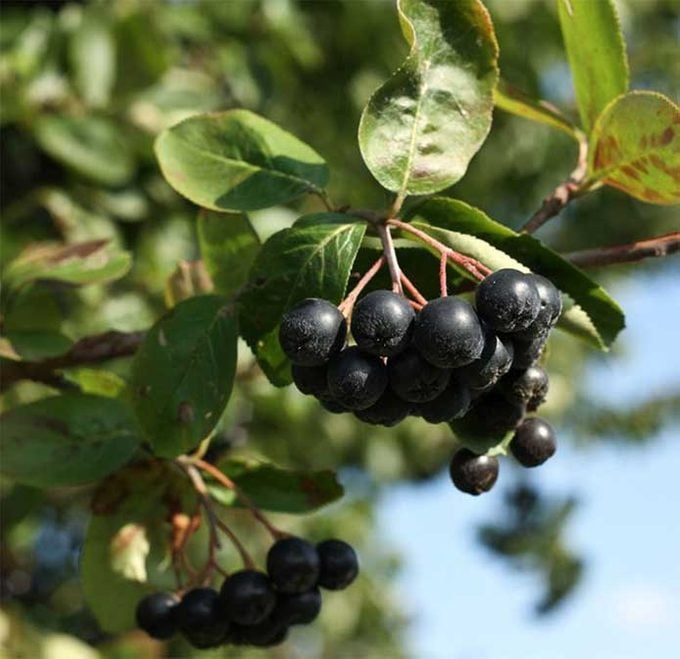
Chokeberry
Aronia, Zones 3 to 9
Size: 3 to 10 feet tall and 3 to 5 feet wide
This North American native brings year-round beauty to any landscape. Once the colorful autumn leaves drop, the red or black berries take center stage. Birds chow down on the fruit throughout winter. Chokeberry welcomes spring with white flowers and spends the summer decked out in glossy green leaves.
Why we love it: Adaptable chokeberry tolerates full sun to shade and wet to dry soil once established. It’s becoming a popular food crop for jam, jelly and wine.
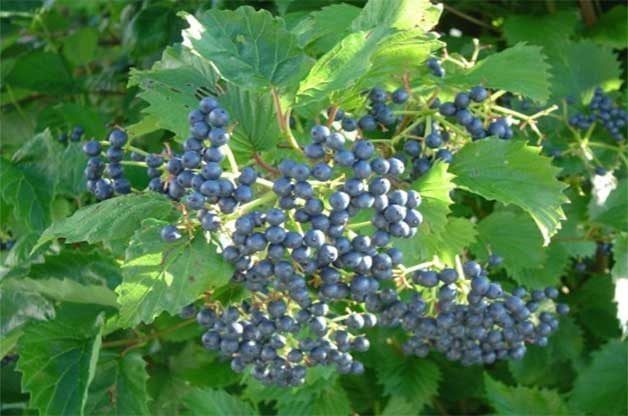
Arrowwood Viburnum
Viburnum dentatum, Zones 2 to 8
Size: 6 to 8 feet tall and wide
Set your bird garden and shrub border ablaze with the red colors of this native viburnum. Grow it in full sun or partial shade. Select a cultivar like Red Feather for consistent and outstanding autumn color.
Why we love it: Birds love it! Plant it where you can watch your feathered friends feast on the blue fruit, but far enough away so you won’t smell the odoriferous spring blooms.
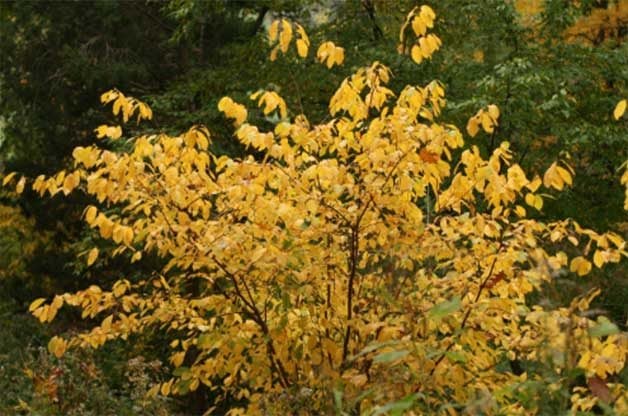
Spicebush
Lindera benzoin, Zones 4 to 9
Size: 6 to 12 feet tall and wide
Turn up the heat in your borders and natural plantings with this native beauty. Enjoy radiant yellow fall color and yellow spring blooms that pop before the leaves. And watch for bright red fruit to steal the show once the foliage drops.
Why we love it: Though spicebush prefers moist, well-draining soil, it tolerates damp soils along creeks and wet woodlands.
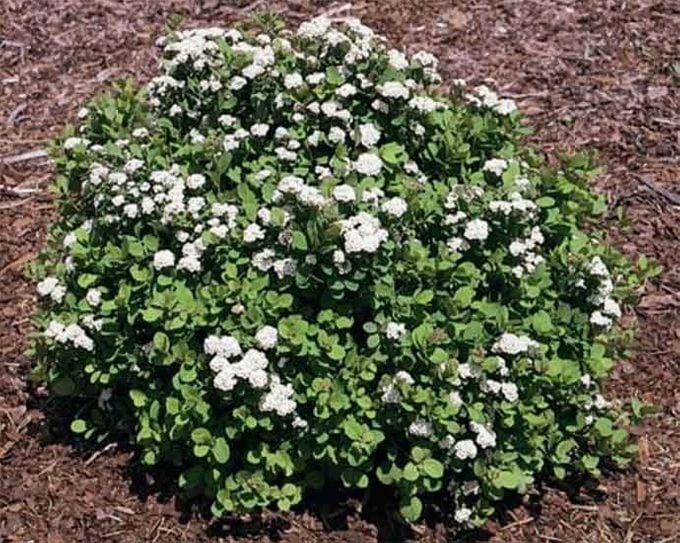
Tor Birchleaf Spirea
Spiraea betulifolia ‘tor’, Zones 4 to 8
Size: 2 to 3 feet tall and wide
Use this adaptable small-scale shrub at the front of a shrub border, as a low hedge or among your perennials. The orange-red and purple fall colors
blend nicely with late-season perennials, such as asters, goldenrod and mums.
Why we love it: White summer flowers attract butterflies, but deer tend to leave it alone.
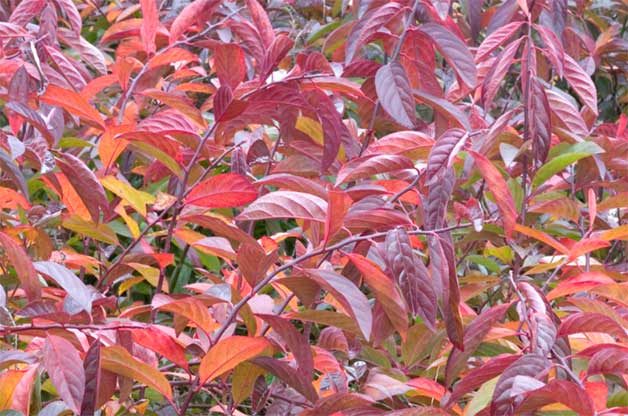
Sweetspire
Itea virginica, Zones 5 to 9
Size: 3 to 5 feet tall and a bit wider
Indulge in the long, colorful display this native shrub provides. The glossy green leaves turn yellow, orange, crimson or scarlet in fall. Grow Henry’s Garnet for outstanding reddish-purple autumn color and Scarlet Beauty for a red display. And Little Henry is a more compact option at 3 to 4 feet tall.
Why we love it: Butterflies (and you) will swarm to fragrant white spring flowers.
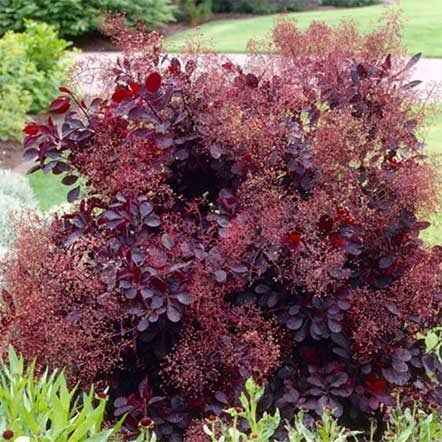
Smokebush
Cotinus coggygria, Zones 4 to 8
Size: 10 to 15 feet tall and wide
Whether it’s grown as a large shrub or small tree, smokebush is a crowd-pleaser. The blue-green, yellow or purple foliage keeps you waiting as it emerges late in spring, but finishes the season on time with yellow, orange, reddish-purple or scarlet foliage.
Why we love it: The hairy flower and fruit stems on this drought-tolerant shrub create a smoky cloud above summer foliage.
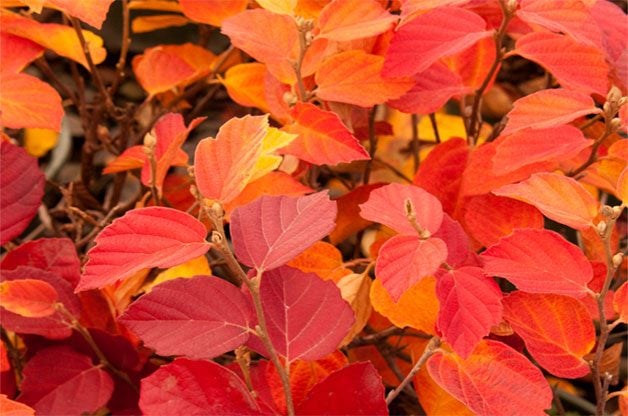
Fothergilla
Fothergilla, Zones 4 to 8
Size: 2 to 10 feet tall and nearly as wide
This cousin of witchhazel bursts into a kaleidoscope of color in late-fall landscapes. The brilliant yellow, orange and scarlet color combination even appears on individual leaves. Grow in full sun to partial shade in well-draining soil.
Why we love it: Fragrant white flowers draw a crowd when they appear before the leaves in spring.
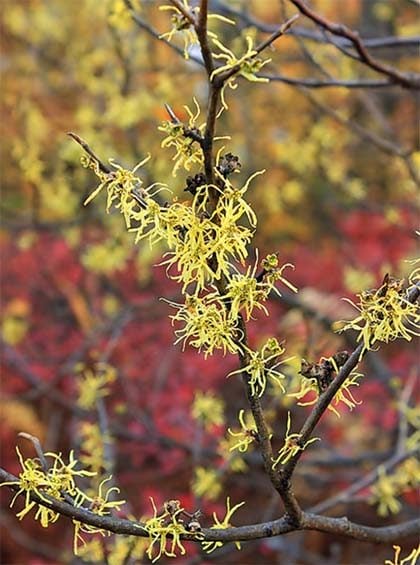
Common Witchhazel
Hamamelis virginiana, Zones 3 to 9
Size: 15 to 20 feet tall and wide
Enjoy both the flowers and fall color on this large grower. Yellow leaves give way to fragrant yellow flowers. This eastern U.S. native tolerates sun or shade and drought once established.
Why we love it: Compact varieties, including Little Suzie, grow only 5 feet tall and wide, and tuck nicely into most landscapes.
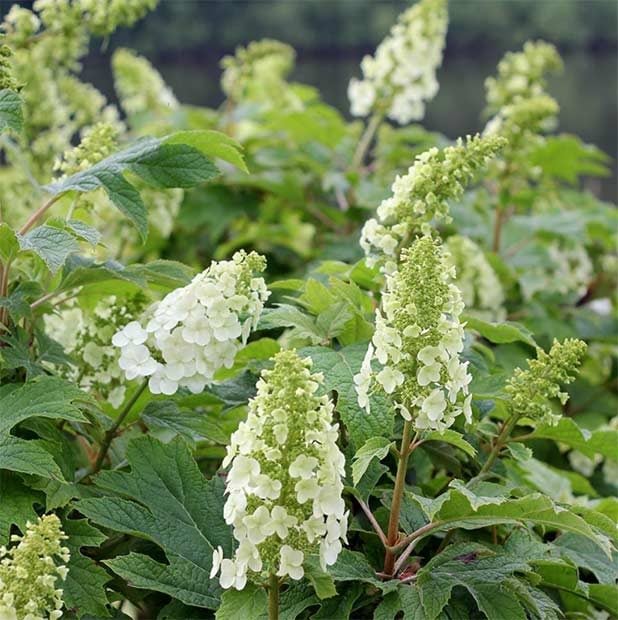
Oakleaf Hydrangea
Hydrangea quercifolia, Zones 5 to 9
Size: 4 to 6 feet tall and wide
You may have a hard time deciding which is more impressive—the creamy white fragrant flowers or the vivid red, orange and purple fall foliage. Grow oakleaf hydrangeas in full sun to part shade and moist, fertile soil. Try Pee Wee, a compact variety at only 2 to 3 feet tall and wide.
Why we love it: The exfoliating cinnamon-brown bark brings color and texture to a winter landscape.
The Right Way to Plant a Shrub
- Prepare the planting hole first. Take a look at the size of the shrub’s root ball. Make the hole about twice as wide and nearly as deep. Extract all rocks and other debris from the soil.
- Cut the root ball. After you’ve eased the plant out of the pot (you may need to cut and peel off the plastic), use a sharp knife to make four slices in the root mass, from top to bottom at even intervals, about an inch deep. This severs any strangling roots and inspires new root growth, believe it or not!
- Plant as usual. When you’re down, the shrub should be in the ground at the same level it was in the pot. In other words, don’t smother it by planting too deeply. Create a trench around it, and water slowly and deeply immediately and whenever the soil starts to dry.
How to Keep Your Shrubs Looking Good
To get maximum impact from your fall-show shrubs, take good care of them. If they are thirsty, not getting enough sun or growing in thin or poor soil, they simply won’t be able to perform. Color always looks best and lasts longer on healthy, well-hydrated plant.
Looking for Even More Fall Shrubs?
Add to your autumn display with late-season blooms and colorful fruit.
- Bluebeard (Caryopteris): blue flowers
- Holly: red fruit and green foliage
- Winterberry: deciduous holly with red fruit along leafless stems
- Beautyberry: purple fruit
- Hydrangea: dried flower heads
- American cranberrybush viburnum: red fruit
- Weigela: white, pink or red flowers
